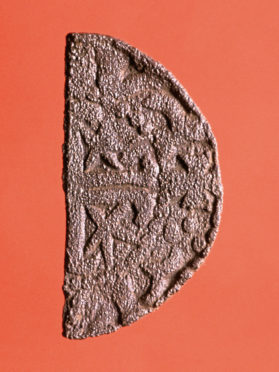This piece of a silver penny is one of many in the Aberdeen Art Gallery and Museum’s numismatic collection.
The design on the two sides of the coin identify it as a William the Lion half-penny. The fact that it has been cut is especially significant as it tells us about the economic systems of medieval Aberdeen.
William the Lion was the king of a unified Scotland from 1165 to 1214. He succeeded his brother Malcolm IV, whose own reign was short-lived following the death of their grandfather David I.
David I and William the Lion both have special significance for Aberdeen. David I was the king who gave the city status as a Royal Burgh and William the Lion gave the earliest town charter, which confirmed the privileges associated with the city’s status. William had a long and eventful reign which featured many significant events such as the founding of Arbroath Abbey.
Coins were considered symbols of authority and influence in medieval Europe. Kings would often have new coins designed and struck to mark their reign. Silver coins like this are especially useful for archaeologists because they typically come from known time periods and mint locations, which means they can be used to date sites and trace socio-economic networks.
Clipped or cut coins are even more interesting because they are evidence of an economy that mixed both metal weight and coinage. Metal weight economies would use the amount of precious metal as a medium to exchange goods, rather than the value of a coin.
Silver coins would often be cut up to make up the difference in weight rather than taken as a unit in themselves.
While most British and European kingdoms were using coin-based exchange, the Viking-age Earldoms in the Western Isles, Orkney, and Shetland, mainly used metal weight.
These areas operated as semi-independent earldoms until the end of the 1100s and early 1200s when the kingship of Norway claimed control over the islands. If an element of the metal weight economy persisted into the time of William the Lion, a cut Scottish coin like this one potentially shows that Aberdeen frequently traded with their northern neighbours.










